Table of Contents
Looking to level up your work efficiency? These dual monitor productivity tips will help you get more done without juggling everything on one screen. Whether you’re a content creator, a coder, or someone just trying to manage daily tasks with ease, using dual monitors can make a world of difference.
Do Dual Monitors Improve Productivity?
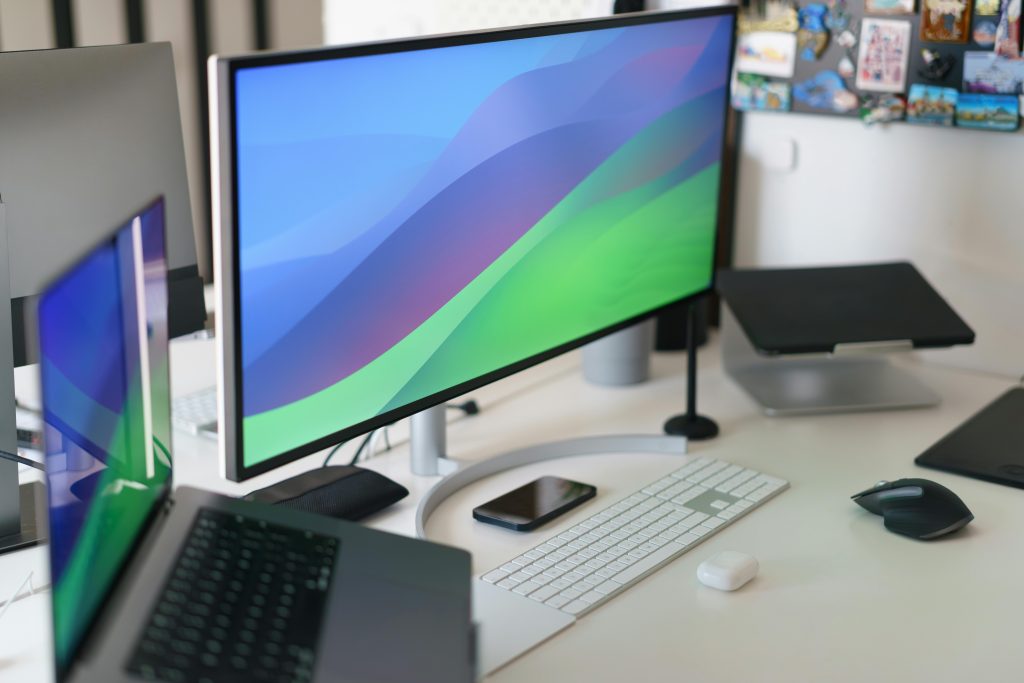
Working with dual monitors gives you the freedom to open windows or two displays side by side, compare one document with another in real time, and keep multiple pages or apps visible without constant switching. Instead of flipping between tabs or minimizing and maximizing every five seconds, dual monitors create a smoother, more focused environment.
From video editing on one display to referencing a document on the other, dual screens offer flexibility that simply isn’t possible on a single screen. With a second monitor, you’re essentially doubling your visual workspace, reducing time lost to window management and making the switch.
Tip #1: Set Up Your Settings Correctly
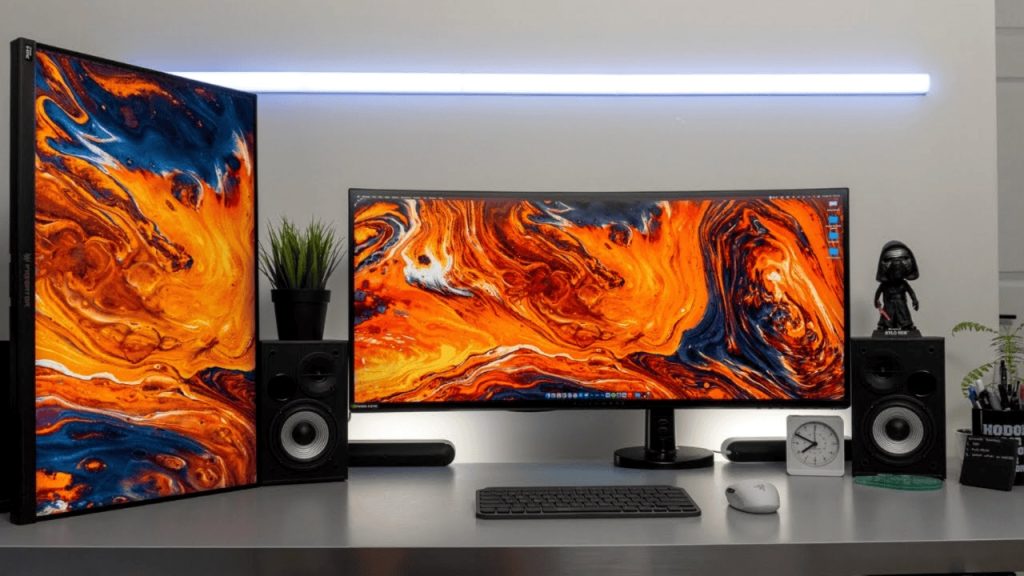
When you connect two monitors, the first thing you should do is tweak your settings.
On Windows, just right-click the desktop and select “Display Settings.” Make sure your second monitor is set to “Extend” so you can use it as a single wide workspace. You can also rearrange your screen displays so the pointer flows naturally between them.
If you’re working with different resolutions—say, a 1080p laptop and a 4K external—take time to tinker with the scaling and layout to keep everything readable and aligned. This will help with the overall screen look and flow for your dual monitor setup.
Tip #2: Use the Right Cables and Ports
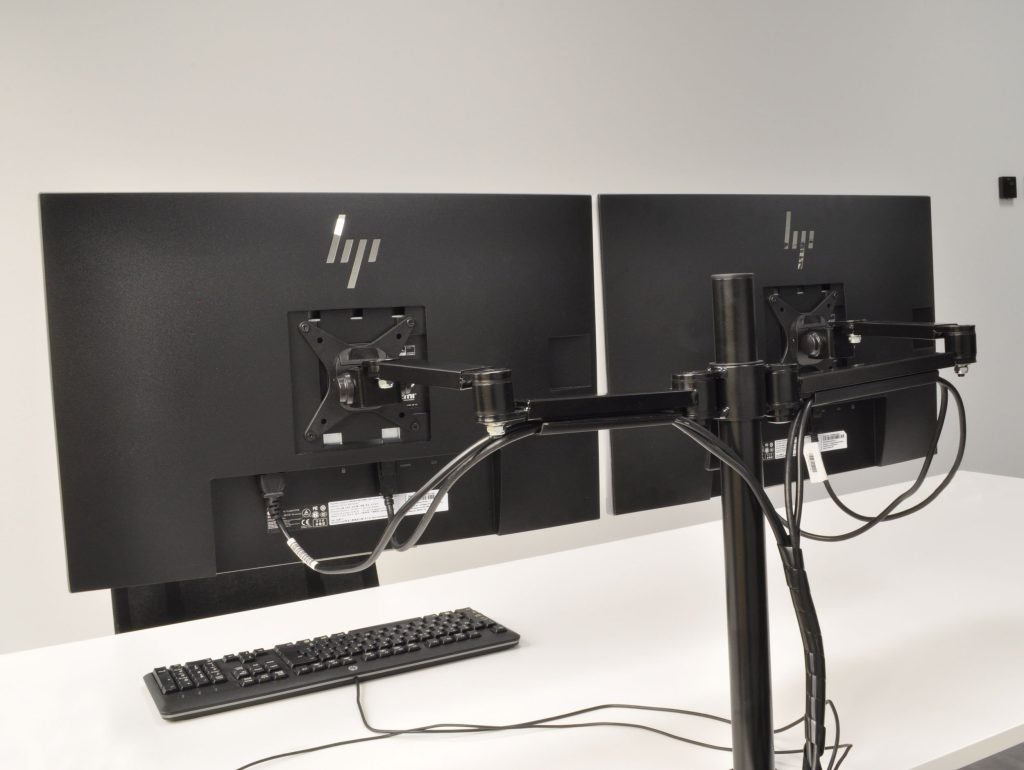
Don’t underestimate cables. Whether you’re using HDMI, USB-C, or DisplayPort, the connection matters for performance. If you’re using a laptop, check whether it supports multiple displays through its USB-C or Thunderbolt port. For computer desktop users, make sure your graphics card has the proper outputs.
Using outdated ones can limit your dual monitor resolution or refresh rate, which affects your overall experience when switching between windows or working on high-resolution work like editing or design.
Tip #3: Assign Specific Tasks to Each Monitor
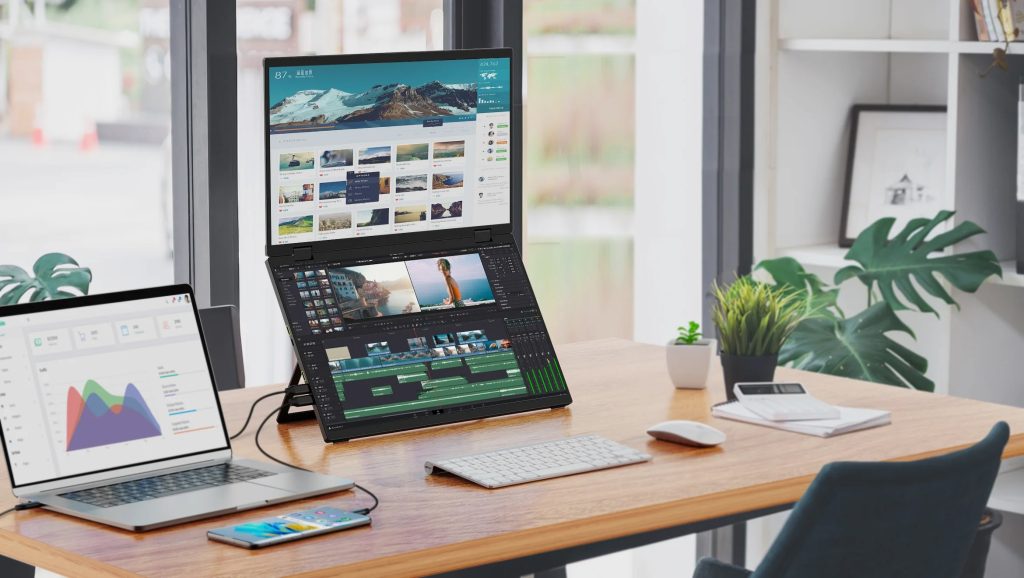
The best way to take advantage of a dual-screen setup is to assign specific roles to each monitor. For example, you could keep email or chat apps open on the left screen, while your main task stays on the right. Or keep research web pages and documents on one, while writing or editing on the other.
This keeps your focus intact and your workspace organized. It’s especially helpful when working with a complex task that requires constant reference between multiple windows. Maximize what you will be doing with your two monitors, and that way, you’re also conditioning your mind to compartmentalize one monitor assignment from another.
Tip #4: Make Use of Keyboard Shortcuts
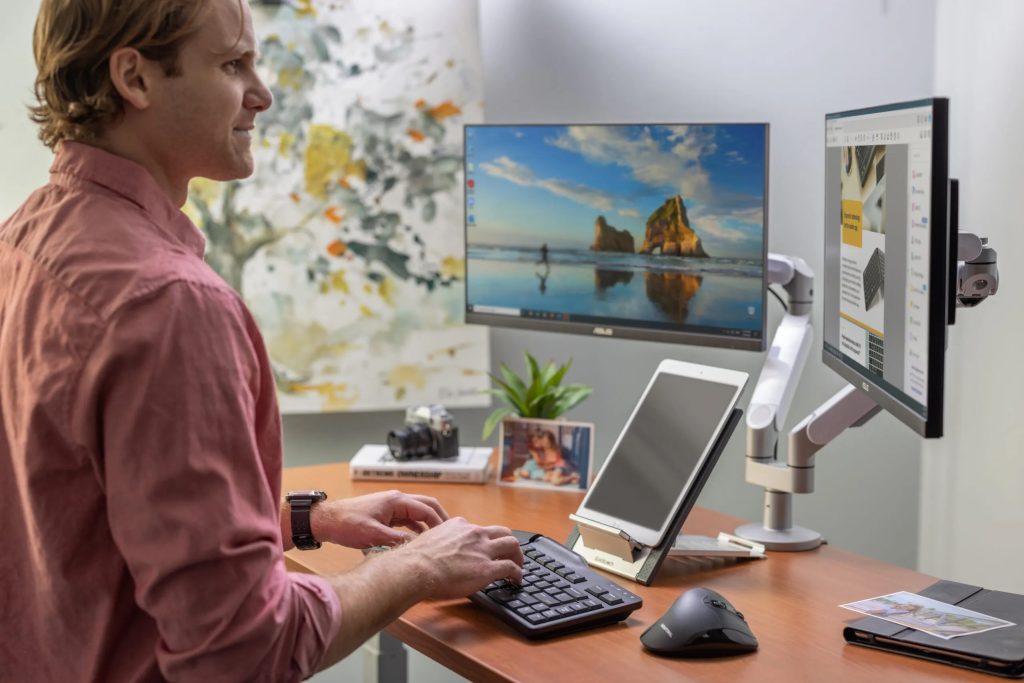
Using shortcuts can save you a ton of hassle. Windows + Shift + Left or Right Arrow lets you move open windows quickly. This is perfect when you want to reorganize your workspace without reaching for the mouse.
If you’re juggling multiple windows and displays, these little tricks help you stay in control and move faster when using two monitors.
Tip #5: Keep Your Desk Tidy
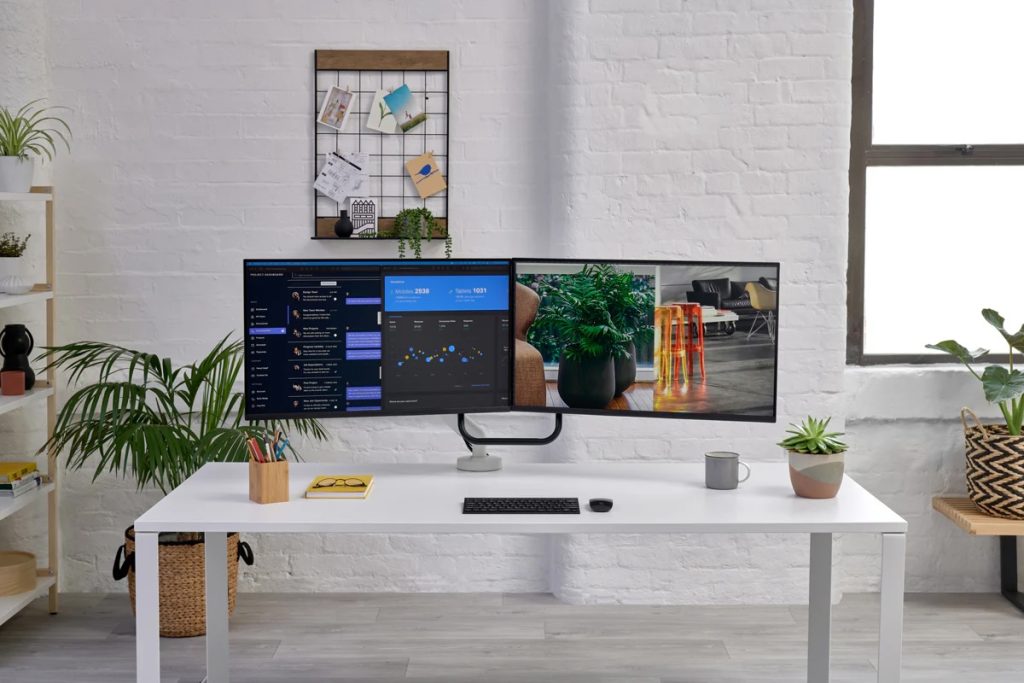
A dual monitor setup can take up more real estate, so it’s important to keep your desk clear and organized. Routers like HDMI or USB-C are neatly behind your screens using clips or sleeves. This not only makes your setup look better but also avoids accidental disconnections.
If you’re using external devices, make sure everything has its place to reduce clutter. You wouldn’t want your dual monitor setup to look clunky and cluttered.
Tip #6: Match Specs When Possible
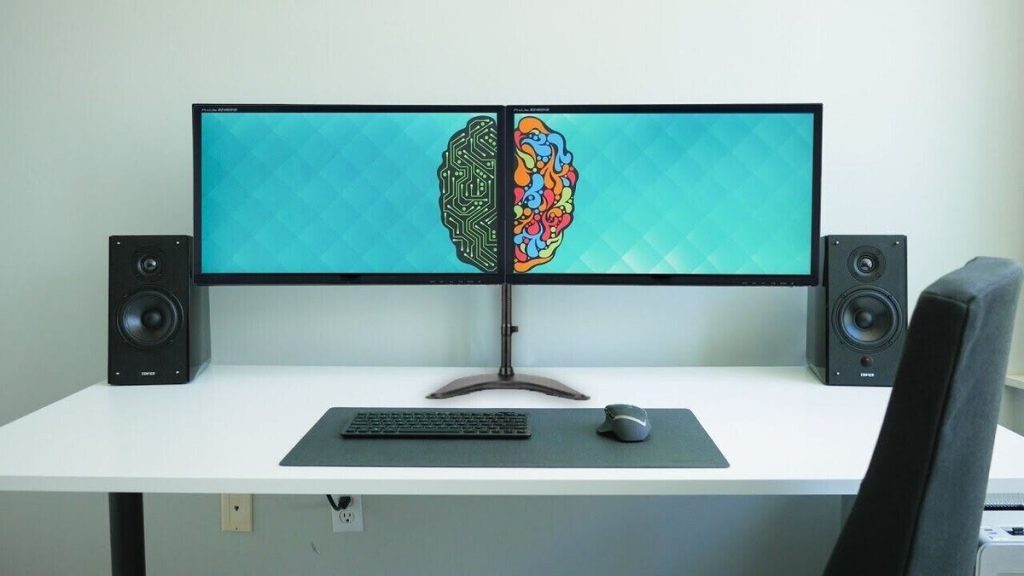
If you can, use two monitors with similar specs. Mixing different resolutions, sizes, or refresh rates can make switching between screens feel jarring.
While it’s not always avoidable—especially if you’re pairing a laptop with an external monitor—matching color profiles and screen dimensions helps create a smoother, more unified experience when dragging windows or referencing content across displays.
It also helps if you have cool wallpapers for your dual monitor setup to add to the aesthetic of things. Having a beautiful screen in front of you can make a difference in both your mood and workflow. You can also mix and match the screens of your dual monitors, with one monitor having a different screen look from your second monitor!
Tip #7: Take Advantage of Extended Desktop Features

With an extended desktop setup, your computer treats your two monitors as one large display. This gives you more room to spread out your work, whether it’s dragging web pages or editing on one side and previewing on the other.
You can even watch a video on one screen while taking notes on the other, without overlapping windows. Just make sure to adjust your dual monitor arrangement in settings that will make the flow feel natural.
Tip #8: Use Software Tools for Better Control
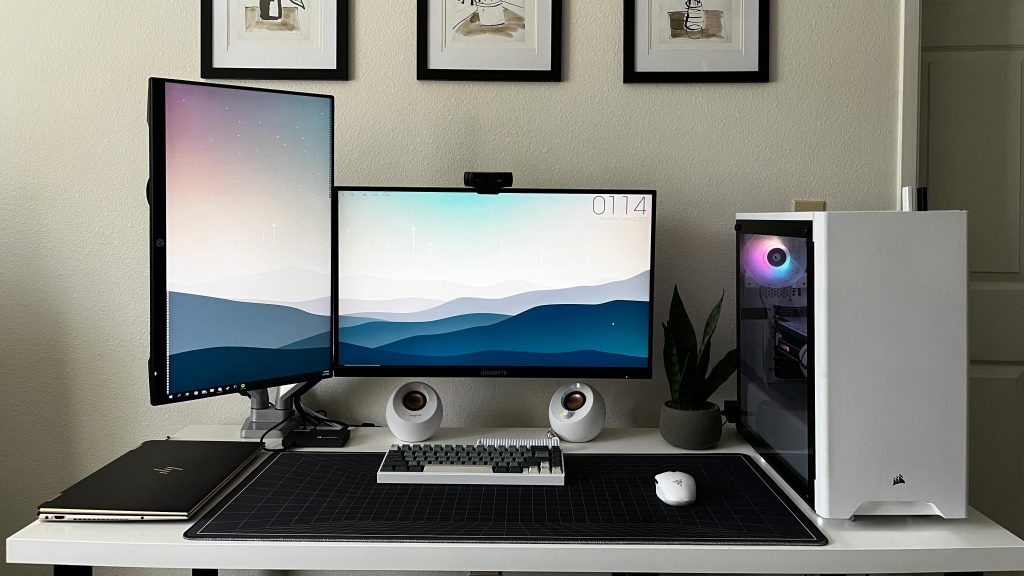
There are tools out there designed to help you manage your dual monitor setup more effectively. Software like DisplayFusion or Microsoft’s PowerToys can let you snap windows to specific areas, set up virtual desktops, or even remember where apps open. If you’re using dual monitors daily, these tools give you more power and flexibility over your screen layout.
Tip #9: Don’t Forget Ergonomics
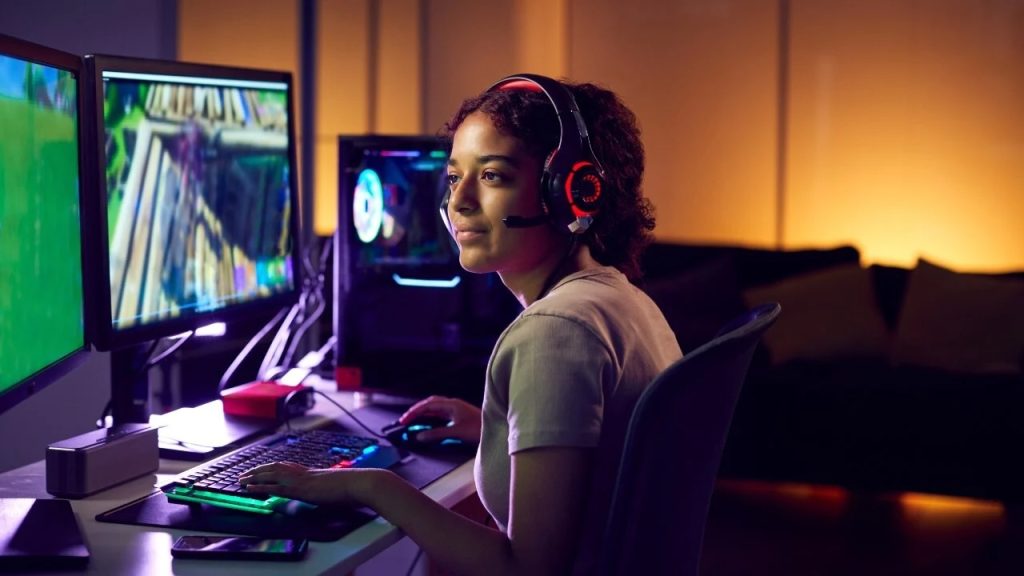
Positioning your dual monitor setup at eye level and at the right distance is just as important as the tech side of things. Avoid turning your head too far to one side all day.
Instead, keep your main monitor directly in front of you, and angle the second slightly to the side. This helps reduce strain while switching between windows. You can also mount your dual monitor on adjustable arms to free up your desk and fine-tune the setup.
We’ve also created an in-depth guide on proper ergonomics for dual monitors, which you can browse through. This will surely help you with your dual monitor setup, all while maintaining good posture as you work!
Final Note
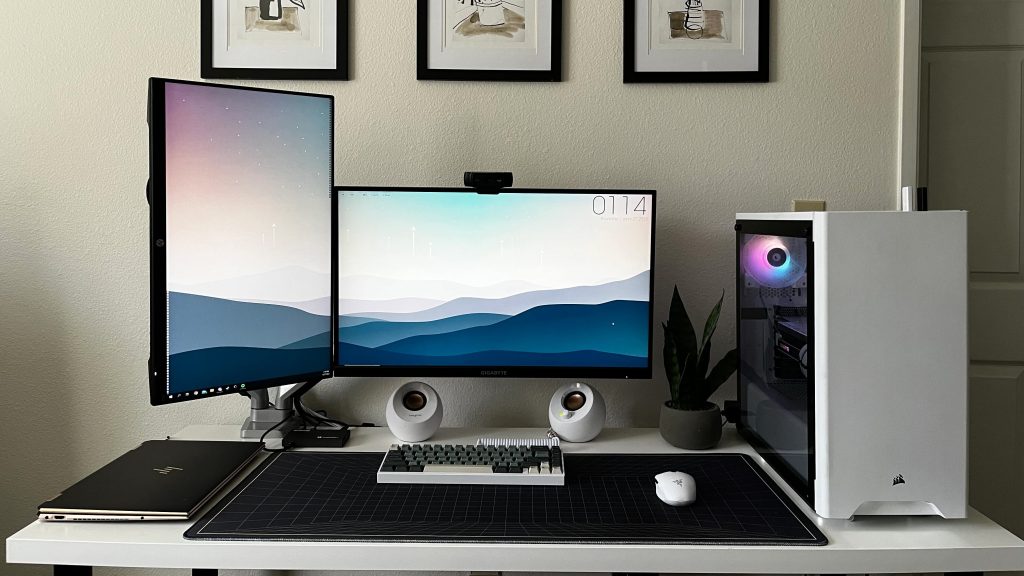
If you’re serious about streamlining your workflow and getting more out of every moment at your desk, these dual monitor tips offer a simple yet effective upgrade. By using two monitors instead of relying on a single screen, you’ll reduce unnecessary task switching, improve your layout, and make full use of your desktop space.
Whether you’re editing a video, referencing a document, or running a presentation, the benefits of a dual monitor setup are hard to ignore. With the right combination of cable management, display alignment, and smart software tweaks, a dual monitor setup can transform how you work and create.
Frequently Asked Questions
What is the best dual monitor setup for productivity?
The best dual monitor setup often depends on your workflow, but a popular and highly effective choice includes two 27-inch monitors with thin bezels and matching display resolutions. This ensures a seamless experience when dragging a screen across displays.
If you’re using a laptop, try to connect an external monitor via HDMI or USB-C to help give you extra room without compromising mobility. Ideally, use them with an adjustable stand or a dual monitor arm for flexible positioning.
For example, pairing two 1440ps side by side offers crisp visuals and plenty of space for multitasking across windows, spreadsheets, or creative tools. If you’re into video editing, color calibration, and consistent panel types are important.
Also, make sure your computer has the graphics capability to handle two monitors at once. If you’re unsure, check your GPU’s supported outputs and choose a compatible HDMI to connect your devices. Do check out our guide on how to build an ergonomic dual monitor setup for a step-by-step process. By creating an ergonomic dual monitor workstation, you can enhance your long-term comfort and efficiency.
How to use a dual monitor or multiple displays effectively?
To use a dual monitor effectively, start by setting your monitor layout in your computer’s display settings. Choose “extend display” mode so you’re not duplicating the same screen on both. This turns your setup into one large workspace where you can organize windows across both panels.
Keep your primary task, like coding or writing, on one monitor, while secondary work, such as emails or reference documents, stays open on the second screen.
Don’t forget the role of HDMI ports. Using the proper HDMI ensures both run at their intended resolutions. Some modern monitors come with multiple HDMI ports, which makes it easy to switch between inputs or even add a third display.
Try to switch things up based on your task, too. For example, during a meeting, you might want to have the presentation on one screen while keeping your notes or agenda on the other. This flexibility is exactly why dual monitors are so useful.
How can I improve my dual monitor performance?
Improving dual monitor performance starts with the basics—use a high-quality HDMI to maintain a stable connection and avoid signal dropouts. So, as much as possible, don’t skimp on purchasing a good HDMI. It would be quite annoying for your monitor to keep flickering because of a faulty connection.
If you’re using monitors with different refresh rates or resolutions, head into your settings and adjust the scaling so each screen performs at its best. Make sure your computer has up-to-date graphics drivers, as this often solves problems related to lag or stuttering across panels.
If you’re on a laptop, ensure it’s plugged into power when driving two monitors, since running extra panels can drain your battery fast and limit performance. It also helps to use an external mouse and keyboard to free yourself from the smaller built-in laptop setup.
Keep an eye on the refresh rate settings of your monitor and check whether your HDMI ports support 60Hz or higher. You may need to switch to HDMI 2.0 or above to unlock higher resolutions or refresh rates.
Some users find it helpful to switch their main and secondary monitor roles depending on what task they’re doing most that day. Don’t forget to physically clean your monitor, too. Dusty dual monitors are less enjoyable and can lead to eye strain over time.
Lastly, using snapping tools or software to organize open documents, apps, or browser tabs across your panels can make everything more efficient. With smart adjustments, fast switching, and proper HDMI connections, your dual monitor setup will feel like a natural extension of your workspace rather than an add-on.
